#oil's well that ends well 1949
Explore tagged Tumblr posts
Text















Dorothy˚ෆ*₊ smiling face collection
#dorothy granger#favorite talkie actress#shopping with wifie 1932#easy on the eyes 1933#ocean swells 1934#the dancing millionaire 1934#wig wag 1935#man i cured 1941#dear! deer! 1942#gem jams 1943#triple trouble 1944#twin husbands 1946#borrowed blonde 1947#wife tames wolf 1947#bachelor blues 1948#oil's well that ends well 1949#punchy pancho 1951
1 note
·
View note
Text
As a second generation Lebanese Australian from a Lebanese family who's always been pro-Palestine, it's so important to view the occupation's drone bombing of Beirut in context. 1) Zionist forces have been bombing the south for over 70 days with missiles and illegal white phosphorus bombs. 2) The 100s of 1000s od Palestinians in Lebanon are heavily discriminated against by the Lebanese government. Palestinian refugees who have lived in Lebanon for generations are denied rights to own property, work, healthcare, and education. 3) This is a reality that co-exists with the Zionist occupation historically treating Lebanon as an "enemy state", with the occupation invading, occupying, and massacring people in Lebanese territories as early as 1949 and as recent as 2006. 4) There is an ultra-right Christian nationalist sect in Lebanon who have historically supported the Zionist occupation, going so far as to form a small militia to assist the occupation in the Shatila and Sabra refugee massacres in which over 3,000 Palestinian and Lebanese people were slaughtered. 5) The Zionist occupation has been leveraging Lebanon's dire economic crisis to take more control over Lebanon's oil and gas fields. There is a huge history behind the occupation's drone strike and assassinations in Beirut today. A history that shows how the Zionist entity's boot on the necks of the surrounding governments has only led to the perpetration of more violence against Palestinians in these nations, as well as citizens of those nations. This is what settler colonial entities do. It's all they can do: division and violence. And when the coloniser can't do the violence themselves, they engineer conditions for others to do it for them under threat of violence. A ceasefire is not enough. The Zionist occupation of Palestine and the Levant must end.
2K notes
·
View notes
Note
I wanna read your ramble about planes more
And I couldn't be any happier to share with you, especially on today, National Aviation Day! ☺️
I'll talk about a real cool and gorgeous plane I saw last month, but first let me tell you about its kind.
The P-51 Mustang was the hotrod fighter of WWII, and easily the most famous fighter of WWII. It was designed and built in just 100 days, and was revolutionary as it was the first aircraft to successfully be designed with a laminar flow wing.
There were a handful a Mustang variations, but here are the most common. The most notable differences are their canopies. A-C had what is called a "birdcage" or "razorback" canopy while the D model had a "bubble" canopy that provided a 360° view (note: The P-51C could also have the Malcom Hood and the P-51B could also have a birdcage canopy)

There is an odd looking bump on the belly of the Mustang that is a cooling scoop for the radiator and oil. While aerodynamically it looks like it causes more drag, which it does, it actually takes advantage of a cool effect called the "Meredith effect." Due to the fact that the hot radiator is inside of the scoop, there is actually a backdoor on the scoop that blows out the hot and pressurized waste air.
This pressurized air being blown out is actually producing thrust, like a jet engine and more specifically a ramjet, and for the Mustang it produces about 300 lbs of thrust. So the "Meredith effect" is that despite the scoop itself producing more drag on the airframe, the thrust being produced nearly equalizes the effect of the drag and offsets it.

Okay, now onto one of the most beautiful planes I have had the pleasure of seeing. This is a P-51C named "Thunderbird" that has quite the history.

Hollywood actor and WWII bomber pilot Jimmy Stewart owned this plane after the war ended. "Thunderbird" never saw service in WWII as it was a surplus aircraft and instead was bought and used as a race plane. It won the 1949 Bendix race trophy and had an average speed of 470 mph, which was record setting at the time. Due to the paint on the plane and how polished it was, it actually gained 8 mph in flight.

In late 1949 famous WASP pilot, and leader, and one of the most well known women aviators and record setters named Jackie Cochran bought "Thunderbird" where she set more world records in it. She eventually sold it back to Jimmy Stewart before it was passed onto more owners.

The aircraft was involved with a crash in 1955 and began part recovery for restoration in 1999. In 2007 the restoration of this aircraft began and was finished in mid 2023. In early June it had its first post restoration flight. It is painted in 100% original colors and has the same designs it wore when it won the Bendix trophy. It had been painted less than one week prior to when I saw it, so it was a very clean and neat Mustang!

A neat fact about this aircraft was that after Queen Elizabeth II was coronated it was used to fly the coronation tapes for CBS from Newfoundland into the United States as it was trusted for its speed to complete the job
Alright, (long) ramble over. Thanks for letting me share!
#unless there was anything specific about planes/aviation in general you wanted me to ramble about- just let me know!#I have seen all of the Mustangs pictured in person (besides the A model ''Miss Virginia''). The D model ''Gunfighter'' is based in Iowa! 😊#I absolutely love talking about aviation. I will probably be talking a little more about planes here soon-#since I'm about to start school in a day for aviation maintenance!#ask#anon#aviation
7 notes
·
View notes
Text
This Black History Month, Feeding America is celebrating the Black inventors who had a profound impact on our mission.
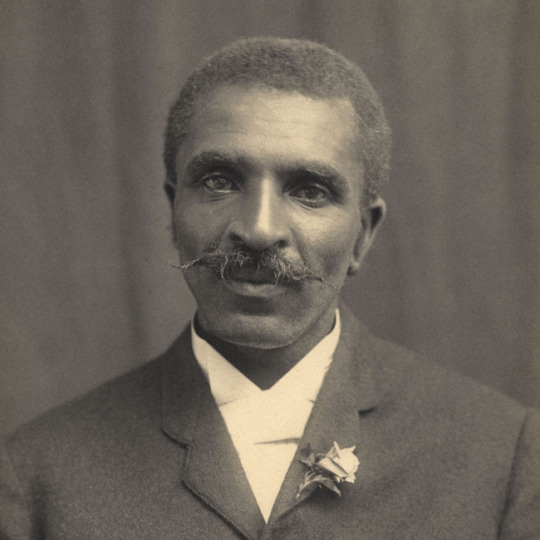
People like George Washington Carver, also known as Mr. Peanut for his revolutionary work creating new products from a single crop, the lowly peanut. And Alice H. Parker, a Black woman who never got the credit, or the fortune, for inventing what we now know as zoned home heating using natural gas. These trailblazers helped America transition to a major agricultural exporter. Their inventions helped farmers increase the harvest to the point that American farmers now feed the world, and those in need. At Feeding America, our work is tied to moving food from farmers to food banks. It is our mission to end hunger in America and many of these Black inventors helped pave the way for U.S. farmers to grow more food.
George Washington Carver (1861-1943)
Born a slave in 1861, George Washington Carver went on to become one of the most prolific agri-business inventors in American history. He invented crop rotation, and more than 300 uses for the peanut. including Worcestershire sauce, cooking oil, and cosmetics. His work is at the foundation of modern farming. It is because of crop rotation and the introduction of grain crops like corn and soybeans, that Feeding America can help our food banks provide for our neighbors in need. Carver helped American farmers feed America.
He was the first African American to earn a bachelor’s in 1894, then a master’s degree in agricultural science from what’s now known as Iowa State University. Carver invented crop rotation. Farmers were struggling to grow anything after years of harvesting a single crop. Carver suggested they plant peanuts, soybeans, and sweet potatoes which would add nutrients to the depleted soil. This method gave farmers a second chance at becoming leaders in agricultural exports.
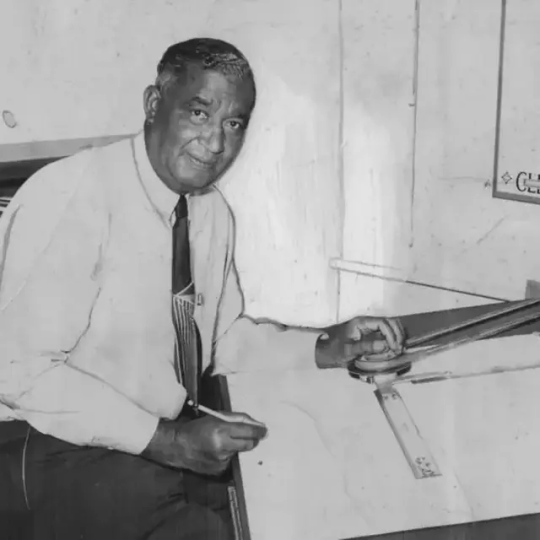
It would be impossible for the Feeding America network of food banks to get the much-needed food they need to nourish feed our neighbors without the work of this man, Frederick McKinley Jones. He invented refrigerated trucks, which help food banks provide fresh produce and meat to their communities safely. And, because of his work, food banks can rely on our massive distribution network to transport fresh produce from farmers across the country on a regular basis. In fact, our network moved 3.8 billion pounds of dairy, produce, and meat -- perishable foods that wouldn’t be available were it not for refrigerated trucks, trains, planes, and ships.
His work revolutionized global logistics. It’s at the heart of what’s now known as “the supply chain.” That is, he made it possible to transport perishable food safely from one place to the next. He co-founded the U.S. Thermo Control Company (Thermo King) which was worth millions by 1949 and later acquired by Westinghouse.
A self-taught mechanic and World War I Army veteran, Jones received more than 60 patents for refrigeration as well as X-ray machines, engines and sound equipment. He was the first African American to receive the Presidential National Medal of Technology.
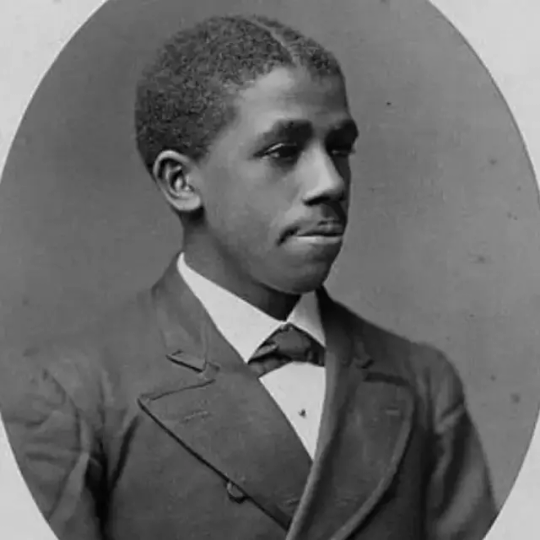
A farmer and a free man before the Emancipation Proclamation, Henry Blair invented two devices to increase agricultural productivity. The first was the corn planter in 1834, and the second was the cotton planter in 1836. His goal was to reduce inefficiencies from manual labor. The Mechanics Magazine published August 6, 1836, described it as “saving the labor of eight men.” Blair’s discoveries helped farmers grow more food for the masses, not just their local communities. For Feeding America, farmers are at the heart of what we do. A large percentage of the food our neighbors receive at their local food pantry is packaged right on the farm where it's grown thanks to our partnership with the USDA. Inventions like Blair's are what fuel the heartland.
While not at the heart of our mission, Feeding America often helps people in need who have to make the tough choice between paying for heat or buying food. During cold winter months, there are many who choose to pay their heating bill and forsake food. They turn to their local food pantry as a stop-gap. The Feeding America network of food banks provides a safe, consistent place for families in need to access food.
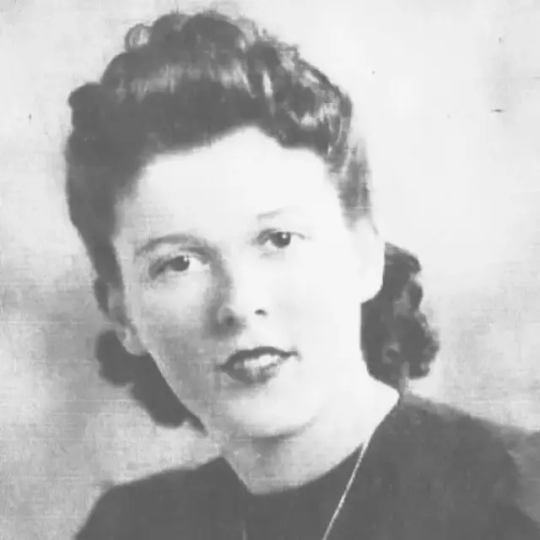
Alice H. Parker, the mother of modern heating, invented the gas-forced air heating system because she too wanted to provide a safe place for families.
Before her invention of the gas furnace, home heating wasn’t safe. Homes were heated with coal or wood-burning fireplaces. Parker was the first to develop natural gas as a cleaner, more efficient alternative to home heating in 1919.
An unsung hero of home heating technology, she revolutionized how we live today. But Parker didn’t have an easy go of it as a Black female inventor. The Civil Rights Movement had yet to give African Americans their rights and the Women’s Liberation Movement was further off. She never profited from her invention. So, we salute her. We know there are many families that struggle with tough choices these days with the rising costs of home heating. But for those who have a warm place to sleep and the modern advances of zoned heat, the next time you adjust the thermostat, say a silent thank you to Alice H. Parker.
5 notes
·
View notes
Text
ISRAEL VS. PALESTINE

RELIGION
ISRAEL
- The vast majority of Israelis identify as Jewish (74.3%), followed by Muslim (17.8%), Christian (1.9%), Druze (1.6%) and some other religion (4.4%).
- Israel is the only country where the majority of the population identify as Jewish.
PALESTINE
- The majority religion of Palestinians are Muslim, including those living overseas.
- Christianity is the main minority religion of palestine.
BORDER
- According to the Green Line agreed upon in the 1949 Armistice Agreements, Israel is demarcated by Lebanon to the north, the Golan Heights under Syrian sovereignty as well as the rest of Syria to the northeast, the Palestinian West Bank and Jordan to the east, and by the Palestinian Gaza Strip and Egypt to the southwest.
TERRITORY
- The Israeli-Palestinian conflict dates back to the end of the nineteenth century. In 1947, the United Nations adopted Resolution 181, known as the Partition Plan, which sought to divide the British Mandate of Palestine into Arab and Jewish states. On May 14, 1948, the State of Israel was created, sparking the first Arab-Israeli War. The war ended in 1949 with Israel’s victory, but 750,000 Palestinians were displaced, and the territory was divided into 3 parts: the State of Israel, the West Bank (of the Jordan River), and the Gaza Strip.
RESOURCES
PALESTINE
- Historic Palestine has long had an abundance of natural resources, ranging from fresh and ground water, arable land and, more recently, oil and natural gas.
ISRAEL
- Mineral resources,Copper ore is located in the ʿArava, phosphates and small amounts of gypsum in the Negev, and some marble in Galilee.
ORIGIN
- Some will begin with the Romans. Others will start with the late 19th-century Jewish migration to what was then the Ottoman Empire – to escape the pogroms and other persecutions in eastern Europe – and the rise of Zionism. Or the Balfour declaration by the British government in 1917 in support of a “national home for the Jewish people” in Palestine and the ensuing conflicts with Arab communities there.
NOVA MUSIC FESTIVAL
- Thousands of Israelis and foreign nationals had descended on the Negev desert in southern Israel for the music festival, known as Nova, marking the Jewish holiday Sukkot and touted as an event celebrating “unity and love.”
- Palestine attack israel in their music festival/party and Palestine killed almost 200 people, the way of Palestine attack in party is parachuting.
ARE YOU PRO PALESTINE OR PRO ISRAEL
- I stand for israel because they are kind, they also want to help the Palestinians, in the case of the Palestinians, they want to be included in the territory of the Israelis that's why they fight for their territory because the Lord gave it to them so they keep it and no matter how many wars come to them they are the ones who win.
REFERENCE:
https://culturalatlas.sbs.com.au
https://en.m.wikipedia.org
https://www.cfr.org
https://al-shabaka.org
https://www.britannica.com
https://www.theguardian.com
https://edition.cnn.com/interactive/2023/10/middleeast/hamas-music-festival-attack-investigation-cmd-intl
1 note
·
View note
Text
Events 1.29 (after 1970)
1973 – EgyptAir Flight 741 crashes into the Kyrenia Mountains in Cyprus, killing 37 people. 1983 – Singapore cable car crash: Panamanian-registered oil rig, Eniwetok, strikes the cables of the Singapore Cable Car system linking the mainland and Sentosa Island, causing two cabins to fall into the water and killing seven people and leaving thirteen others trapped for hours. 1989 – Cold War: Hungary establishes diplomatic relations with South Korea, making it the first Eastern Bloc nation to do so. 1991 – Gulf War: The Battle of Khafji, the first major ground engagement of the war, as well as its deadliest, begins between Iraq and Saudi Arabia. 1996 – President Jacques Chirac announces a "definitive end" to French nuclear weapons testing. 2001 – Thousands of student protesters in Indonesia storm parliament and demand that President Abdurrahman Wahid resign due to alleged involvement in corruption scandals. 2002 – In his State of the Union address, President George W. Bush describes "regimes that sponsor terror" as an Axis of evil, in which he includes Iraq, Iran and North Korea. 2005 – The first direct commercial flights from mainland China (from Guangzhou) to Taiwan since 1949 arrived in Taipei. Shortly afterwards, a China Airlines flight lands in Beijing. 2008 – An Egyptian court rules that people who do not adhere to one of the three government-recognised religions, while not allowed to list any belief outside of those three, are still eligible to receive government identity documents. 2009 – Governor of Illinois Rod Blagojevich is removed from office following his conviction of several corruption charges, including solicitation of personal benefit in exchange for an appointment to the United States Senate as a replacement for then-U.S. president-elect Barack Obama. 2013 – SCAT Airlines Flight 760 crashes near the Kazakh city of Almaty, killing 21 people. 2014 – Rojava conflict: The Afrin Canton declares its autonomy from the Syrian Arab Republic. 2017 – A gunman opens fire at the Islamic Cultural Centre of Quebec City, killing six and wounding 19 others in a spree shooting.
0 notes
Text
DUBAI, United Arab Emirates (AP) — Heavy thunderstorms lashed the United Arab Emirates on Tuesday, dumping the heaviest rain ever recorded in the country in the span of hours as it flooded out portions of major highways and Dubai’s international airport.
The state-run WAM news agency called the rain “a historic weather event” that surpassed “anything documented since the start of data collection in 1949.” That’s before the discovery of crude oil in this energy-rich nation then part of a British protectorate known as the Trucial States.
The rains began late Monday, soaking the sands and roadways of Dubai with some 20 millimeters (0.79 inches) of rain, according to meteorological data collected at Dubai International Airport. The storms intensified around 9 a.m. local Tuesday and continued throughout the day, dumping more rain and hail onto the overwhelmed city.
By the end of Tuesday, more than 142 millimeters (5.59 inches) of rainfall had soaked Dubai over 24 hours. An average year sees 94.7 millimeters (3.73 inches) of rain at Dubai International Airport, the world’s busiest for international travel and a hub for the long-haul carrier Emirates.
At the airport, standing water lapped on taxiways as aircraft landed. The airport ended up halting arrivals Tuesday night and passengers struggled to reach terminals through the floodwater covering surrounding roads.
One couple, who spoke to The Associated Press on condition of anonymity to speak freely in a country with strict laws that criminalize critical speech, called the situation at the airport “absolute carnage.”
“You cannot get a taxi. There’s people sleeping in the Metro station. There’s people sleeping in the airport,” the man said Wednesday.
They ended up getting a taxi to near their home some 30 kilometers (18 miles) away, but floodwater on the road stopped them. A bystander helped them over a highway barrier with their carry-on luggage, the bottles of gin they picked up from duty free clinking away.
Dubai International Airport acknowledged Wednesday morning that the flooding had left “limited transportation options” and affected flights as aircraft crews couldn’t reach the airfield.
“Recovery will take some time,” the airport said on the social platform X. “We thank you for your patience and understanding while we work through these challenges.”
Police and emergency personnel drove slowly through the flooded streets of Dubai. Lightning flashed Tuesday across the sky, occasionally touching the tip of the Burj Khalifa, the world’s tallest building. The city’s driverless Metro saw disruptions and flooded stations as well.
Schools across the UAE, a federation of seven sheikhdoms, largely shut ahead of the storm and government employees were largely working remotely if able. Many workers stayed home as well, though some ventured out, with the unfortunate stalling out their vehicles in deeper-than-expected water covering some roads.
Authorities sent tanker trucks out into the streets and highways to pump away the water. Water poured into some homes, forcing people to bail out their houses.
The country’s hereditary rulers offered no overall damage information or injury information for the nation, as some slept into their flooded vehicles Tuesday night. In Ras al-Khaimah, the country’s northernmost emirate, police said one 70-year-old man died when his vehicle was swept away by floodwater.
Fujairah, an emirate on the UAE’s eastern coast, saw the heaviest rainfall Tuesday with 145 millimeters (5.7 inches) falling there.
Authorities cancelled school and the government instituted remote work again for Wednesday.
Rain is unusual in the UAE, an arid, Arabian Peninsula nation, but occurs periodically during the cooler winter months. Many roads and other areas lack drainage given the lack of regular rainfall, causing flooding.
Rain also fell in Bahrain, Qatar and Saudi Arabia.
In neighboring Oman, a sultanate that rests on the eastern edge of the Arabian Peninsula, at least 18 people had been killed in heavy rains in recent days, according to a statement Tuesday from the country’s National Committee for Emergency Management. That includes some 10 schoolchildren swept away in a vehicle with an adult, which saw condolences come into the country from rulers across the region.
1 note
·
View note
Text
Stay Golden Sunday: Sophia's Wedding, Part 1
Sophia reunites with an old friend, Max Weinstock, and the sparks fly in more ways than one. Rose and Blanche start an Elvis fan club.
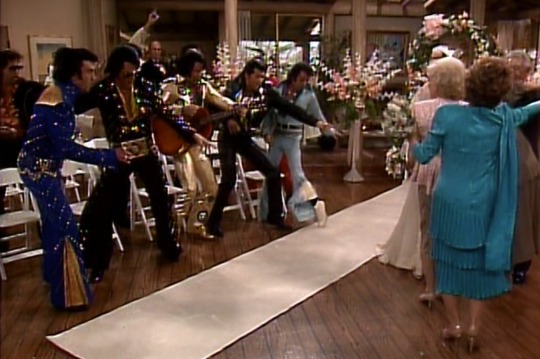
Picture It...
Rose runs in, so excited she's shaking: Her application to start a branch of the Elvis Presley Hunka Hunka Burnin' Love Fan Club has been approved. Blanche, who's also a huge Elvis fan, appoints herself president (also claiming she slept with him). Sophia answers a phone call returns in tears: Her best friend from Brooklyn, Esther Weinstock, has died. Dorothy volunteers to go to the funeral with her, but Sophia refuses.
DOROTHY: Oh I'm so sorry. What happened? SOPHIA: She was fighting an oil rig fire in the Gulf of Mexico. She was 88! ROSE: Well, it's great that she was able to work right up to the end.
After Sophia storms out of the kitchen, Dorothy explains that Esther's husband Max and Sophia's husband Salvador were business partners running a pizza-knish stand. Max gambled their profits away one night and they went broke. Sophia reenters and says she swore she'd never see Max again, but Dorothy convinces her to go. In Brooklyn, Sophia and Dorothy arrive at the Weinstock house after the funeral. Max enters, and Sophia's still angry with him.
Max says he's finally willing to admit the truth, and begins narrating a story... Brooklyn 1949: Sophia, Sal, Max, and Esther are playing gin in the Weinstock's home. Esther and Sophia go make coffee, and Sal tells Max that he lost their money betting on the races. He apologizes to Max and says Sophia will throw him out when he tells her. When Sophia comes in, Max intervenes and says he's the one who gambled the money away.
DOROTHY: Ma, say something to him! SOPHIA: I can't. Sicilians have a hard time with apologies. DOROTHY: They also have a hard time passing wet cement without putting someone in it. They manage!
Back in the present, Max says it was worth it as the Petrillos stayed together and Sal quit gambling. Dorothy urges Sophia to apologize to Max, and she does, in her own way. Back in Miami, Blanche and Rose close the first fan club meeting with show-and-tell, a partially eaten pork chop. Dorothy isn't impressed, and Blanche kicks her out of the club for speaking ill of the King (Dorothy's not too broken up about it).
Everyone else leaves, and the Girls decide to get dinner. Dorothy goes to get Sophia, who's been depressed since Esther's funeral. She screams, and Rose and Blanche come running . . . to find Sophia in bed with Max. All three Girls are shocked, and Dorothy immediately starts yelling at her mother. Then Sophia breaks the news that she and Max are getting married, and Dorothy faints on the spot. Rose revives her with some smacks to the face.
youtube
Dorothy demands that Sophia explain. Max and Sophia said that they reconnected and fell in love while they were in Brooklyn together, and they want to marry right away. Blanche and Rose are on board, saying it's romantic, but Dorothy is still angry and say it's a mistake. Sometime later, Rose and Blanche decide to hire an Elvis impersonator for their next club meeting. Dorothy, meanwhile, is trying to avoid the topic of the wedding.
Rose and Blanche try to make her see reason, but Dorothy says she doesn't believe they're really in love after only three days. Sophia enters with her wedding dress, but tells the Girls that, according to Sicilian custom, she can't get married without Dorothy's blessing. Dorothy again refuses, and isn't scared of Sophia's threats to put a curse on her. On the day of the wedding, Rose and Blanche go to help Sophia get ready, but she's locked herself in the bathroom and says the wedding is off.
ROSE: Don't you have to be a virgin to wear a white wedding dress? SOPHIA: Please, the last time I was a virgin, the Louisiana Purchase was still in escrow.
Max and Dorothy enter, and Sophia talks about how much she loves Max but she can't face Dorothy's disapproval. Dorothy finally breaks and confesses (while the pushy caterer hovers) that she's struggling to see her mom with another husband, but she wants her to be happy. Sophia finally exits the bathroom in her wedding dress. They all wish her happiness and the four Girls have one more group hug.
The four Girls exit to the living room where Max and the priest are waiting to a surprise: A room filled with Elvises. Rose mixed up the guest list with the impersonator list. The priest begins the ceremony anyway while Dorothy, Rose, and Blanche talk about weddings. They finish the vows and the priest pronounces them man and wife. As Max and Sophia kiss, the Elvises all stand up and begin singing the wedding song from Blue Hawaii.
"Then if no Elvis in this room has any objection to this union . . ."
When I said at the start of the season that they were giving Sophia more screentime, I was not exaggerating a bit. We're six episodes in and we've gotten our third Sophia-centric episode (four, if you count "Yes We Have No Havanas"). Now we see her getting a big two-parter where she marries an old friend after reconciling a forty-year misunderstanding with him. Though there's a part of me that wonders about Max's enthusiasm given that he just lost his wife.
BLANCHE: Oh Sophia, honey, I want to wish you all the happiness in the world! SOPHIA: Thank you, Blanche! ROSE: And Sophia, I want to offer you a traditional Scandinavian wedding blessing. *rambles in nonspecific Scandinavian with a lot of F sounds* SOPHIA: I'm really touched. *puts a hand on her chin* I'm also soaking wet. All right, one group hug, and let's hit the road!
In what is apparent a recurring theme for Sophia (see also: her sister and her brother), she reconciles a decades-long misunderstanding with a loved one. Max decides to save Sophia's marriage by covering up Sal's gambling problem that leads them to go out of business. It's a noble act of sacrifice considering it gives Sal the push he needs to give up gambling (at least as far as Max knows, but we'll get to that in another episode).
There's one person in this story who I think gets a bit lost: Esther Weinstock herself. What did she think of Max's lie, assuming that she knew it was a lie? Did she keep in touch with Sophia afterwards? I would presume so, since someone from her family informs Sophia about her death. Since "Weinstock" is her married name, I presume she's actually Italian -- Sophia says they grew up together, which means Esther was also Sicilian, right?
ROSE: Sophia, she was your best friend. Are you sure you don't want to go to her funeral? SOPHIA: Of course I wanna go. But I swore a Sicilian oath I would never cast my eyes on Max Weinstock again. And nothing you can say or do will make me change my mind. DOROTHY: I'll pay for both tickets." SOPHIA: Book business class. If I have to sit through The Three Amigos, I'll need champagne.
I also feel bad for Esther that her husband marries someone else mere weeks after her funeral. While Sophia's had two decades to mourn her husband, Esther hasn't been gone nearly as long, and presumably she and Max were happily married the whole time. It makes me question why Max is willing to move on so fast -- though I concede that such things do happen. I think it's very (sadly) telling that Esther's actress, Fritzi Burr, isn't even properly credited in the episode -- she's listed as a character named "Ruth."
Poor Dorothy flips from being fully in support of her mother reconciling with Max to being the main obstacle to their romance, so she's balancing a lot here. The final scene, in which she confesses that this is all stemming from lingering grief for her father but that she wants her mother to be happy more, is very sweet. As a piece of trivia, according to Golden Girls Forever, Raye Birk, who plays the caterer, insisted on keeping the caterer's lines in when the producers tried to cut them, and I think we're all better for it.
youtube
Side note, but Dorothy feels more Sicilian than usual in this episode. She mentions paying respects to the Weinstocks after the funeral and putting people in cement, and is also familiar with Sicilian customs and curses, albeit with help from Aunt Regina. One of my favorite little touches in this episode is that an Italian complimenting someone else's food is considered to be a valid apology even by Dorothy's standards.
The B-plot, about Rose and Blanche starting an Elvis Presley support club, is a personal favorite. While their self-proclaimed fanatical devotion to the King's legacy, to the point of cooing over his half-eaten food, is intended to (and does) come across as cringy, it's also a note-perfect parody of modern fandoms. I also love it when an A- and B-plot merge at the end of the episode, and the big reveal at the end that the Elvises are the guests at Sophia's wedding is always good for a laugh.
BLANCHE: Do you know what I hate doing most after a party? ROSE: Trying to find your underwear in the big pile?
This episode has one of the most popular and well-known pieces of Golden Girls trivia attached to it: Namely, that one of the Elvis impersonators was played by none other than Quentin Tarantino. The man himself said during an appearance on The Tonight Show that the residuals from his appearance on the show helped keep him afloat while making Reservoir Dogs. So, if you think about it, this episode is indirectly responsible for the rise of a major part of movie culture for the next decade.
I gotta say, leaving aside the effect his appearance had on the history of film, Tarantino was putting in work back there. You can tell, watching the episode, which Elvises are into their role and which ones are phoning it in (Blue Jumpsuit Elvis is barely moving one of his knees). Quentin's Sun Records Elvis falls into the former category -- his career could have ended right there and it would have been a high note to go out on.
Episode rating: 🍰🍰🍰🍰 (four cheesecake slices out of five)
Favorite part of the episode
The Elvises may not know why they're here, but they're going to do what they do best:
youtube
#golden girls#stay golden#stay golden sunday#sophia petrillo#dorothy zbornak#rose nylund#blanche devereaux#picture it#s04e06#sophia's wedding part one#Youtube
1 note
·
View note
Text
Mike Savage New Canaan The Muscle Mass Vehicle Cycle
Whether they are sneaking gradually down the community strip, fish tailing down back road, or driving down the long stretches of desert freeway, the American car grumbling under the power of a huge engine simply appears to fit. In fact, while truth beginning of the contemporary automobile can be discussed, the muscle mass auto is something that's wholly American.
What is a muscular tissue auto?
The exact interpretation of what a muscle mass vehicle is can be a bit fuzzy, yet most typically focus on a V8 engine scheduled for a larger car or perhaps a vehicle being positioned right into a tool sized sedan. These sedans were generally 2 door automobiles. These smaller sized, yet never little, autos coupled with considerably bigger engines implied vehicles which might let loose a lot of power in a relative short time.
Mike Savage New Canaan
A quick history Though this practice was fairly typical amongst the bootleggers during Restriction, the earliest attributed muscle mass automobile to be produced by an auto producer is usually cited as the 1949 Oldsmobile Rocket 88. The Rocket 88 came with a brand-new high-compression, above shutoff V-8 dropped right into a lightweight body, resulting in the rate and power mix which would come to be conventional.
A few various other makers created them throughout the 1950s, with a lot more creating the cars and trucks and engines independently, causing the hot rod fad. It wasn't till the 1960s when most American producers started to make cars which rolled off the production line fitting the muscular tissue cars and truck definition. By the end of the 1960s, it seemed that every American automobile manufacturer was producing at the very least one, with competitors lowering rates and boosting need. The golden era swept in fully, and also saw the market come to be strong enough to fragment, dividing itself right into high power muscle cars, economical pony cars and trucks, as well as also lower powered models for starting fanatics.
Why did they decrease?
Like the loss of the Roman Empire, the death of the muscular tissue cars and truck originated from a variety of resources. The automobile security and emissions requirements which Ralph Nader started crusading for in the 1960s started to become law - mandating requirements, which far better for individuals as well as the atmosphere, restricted the practicality of the muscle automobile. The OPEC oil stoppage of 1973 saw huge range gasoline rationing, cost controls, and filling station lines, assisted to make them unwise and also relocate the American buyer towards smaller sized autos. The muscular tissue automobile was ending up being harder to produce as well as a lot more pricey to own, a 2 front strategy that largely spelled doom for the breed.
Mike Savage New Canaan
When did they come back?
The trend towards smaller cars lasted via the remainder of the 1970s and right into the 1980s. It was after that when gas rates alleviated back in the direction of historic lows, the Japanese economic situation found itself in hard times, and also Americans uncovered a love for bigger autos. Given, those larger cars were sporting activity utility automobiles, yet they started a horsepower love affair. This affair bled over right into a re-ignition of the muscle cars and truck, probably first with the Dodge Magnum RT, a mix of cars and also a terminal wagon, and then drifting into the rejuvenation of the Dodge Battery Charger and also the Pontiac GTO.
Unfortunately, the rebirth was brief lived, ending because of comparable concerns as the very first period - high gas rates, enhancing exhausts requirements, and also a relocation by customers in the direction of smaller sized and also extra effective lorries. Whether or not the muscular tissue cars and truck will certainly make a third renewal has yet to be seen. One thing that is certain is that Americans seem to be attracted to effective automobiles regardless of what part of the nation they call residence.
0 notes
Text
Dominique Darbois
Dominique Darbois (1925-2014) was the daughter of a major specialist of Asian arts and a novelist. She participated in the Free French Forces during the Second World War in 1941. Being a member of the resistance and Jewish, she was arrested and imprisoned at the Drancy camp for two years. In 1944, she continued to fight against the occupiers and received the Resistance Medal. In 1945 France was liberated and Darbois left for Indochina via Shanghai. Although she was only twenty, she had already lived several lives. After the war ended, she came back to France and became the assistant of the French photographer Pierre Jahan, which prompted her career as a photographer.
In 1951, she organized an expedition to Amazonia and Guyana with Francis Mazière and Wladimir Ivanov, from which originated four publications: “Parana le petit Indien” (1952), “Les Indiens d’Amazonie” (1954), “Mission Tumuc-Humac” (1954), “Yanamalé village of the Amazon”. The first publication was translated into eight languages. She then began the collection "Enfants du monde” [Children of the world], a series of twenty volumes containing images and texts by Darbois herself. This collection offered a world tour not from an ethnographic standpoint but rather as a photographer committed to meet children in a world where not everyone was born equal. She surveyed over fifty countries.
If she spent only a few days in Mongolia in 1957, she actually stayed much longer in China during the Hundred Flowers period [during which the Communist Party encouraged its citizens to openly express their opinions of the communist regime]. Thanks to the French photojournalist Henri Cartier-Bresson – who photographed the last days of the political party Kuomintang in 1949 – she obtained a visa only a few people would get at that time. She accompanied an archaeological expedition that led her to photograph the Maijishan Grottoes in Gansu province as well as the Gobi Desert. She captured daily life in both cities and the countryside, while seizing traditions: acrobatics, games of chance, operas, puppets shows… and the new oil refineries around Lanzhou, oil wells around Yumen, political posters, and even the lives of prisoners in labour camps.
In 1960 she published “Les Algériens en guerre” [Algerian at war]. She completed reportage on the maquis and the training camps of the National Liberation Front [the socialist political party in Algeria] in Tunisia. This reportage was forbidden in France. Darbois was interested in the moving world and in ancient civilizations. She published “Kaboul, le passé confisqué. Trésors du musée de Kaboul, 1931-1965” [Kabul, the confiscated past. Treasures of the Kabul Museum, 1931-1965] (2002).
While she could have put aside her cameras, started to manage her archives, once again she committed herself to women in France and in Africa. She published then “Afrique, terre de femmes” [Africa, land of women] (2004) and “Terre d’enfants” [Children's Land] (2004), with a text written by Pierre Amrouche. This was her ultimate work
Written by Françoise Denoyelle

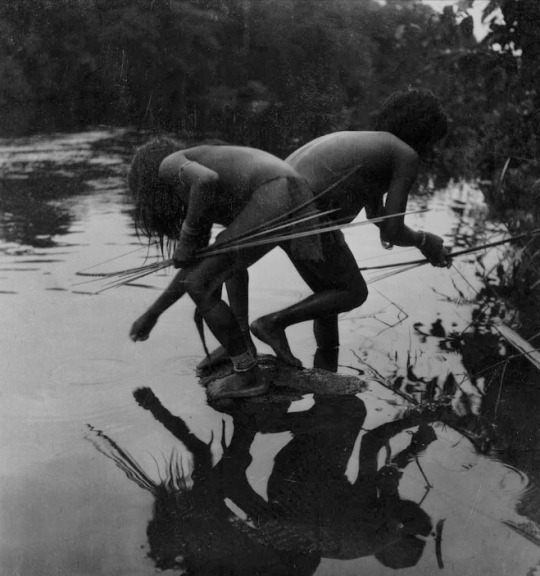
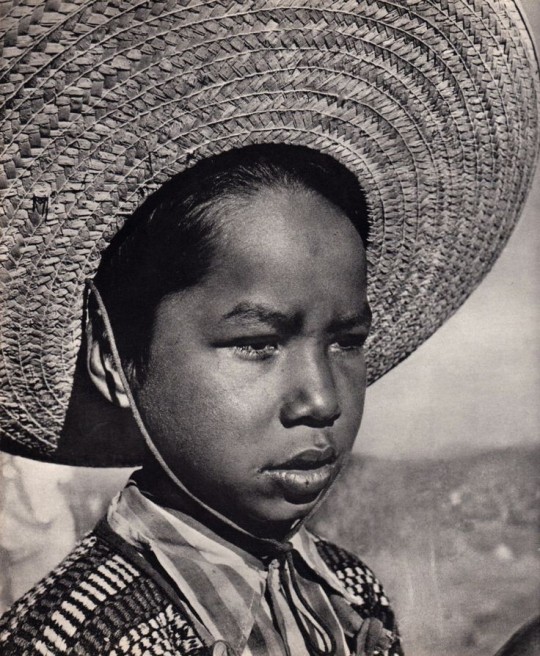

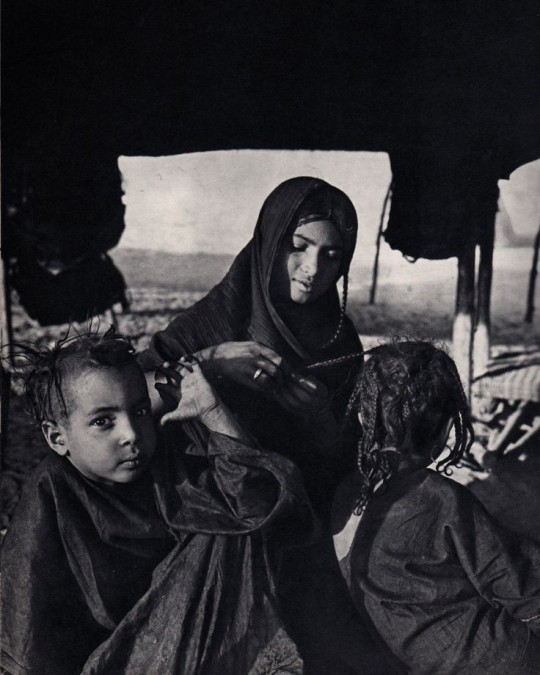
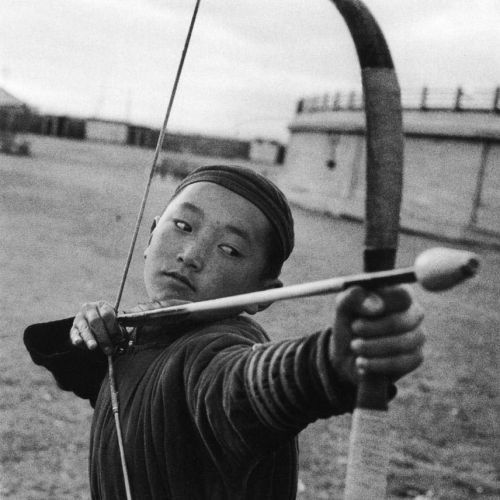




#dominique darbois#photography#culture#art collective#art#photomagazine#london#bnwphotography#photojournalism#female photographers
5 notes
·
View notes
Photo

Acid Bath Murderer
John Haigh moved to London in 1936, and became chauffeur to William McSwan, a wealthy owner of amusement arcades. He also maintained McSwan's amusement machines. Thereafter he pretended to be a solicitor named William Cato Adamson with offices in Chancery Lane, London; Guildford, Surrey; and Hastings, Sussex. He sold fraudulent stock shares, purportedly from the estates of his deceased clients, at below-market rates. His scam was uncovered by someone who noticed he had misspelled Guildford as "Guilford" on his letterhead. Haigh received a four-year prison sentence for fraud. Haigh was released just after the start of the Second World War; he continued as a fraudster and was sentenced to several further terms of imprisonment.
Regretting that he had left victims alive to accuse him, he became intrigued by French murderer Georges-Alexandre Sarret, who had disposed of bodies using sulphuric acid. Haigh experimented with field mice and found that it took only 30 minutes for the body to dissolve.
Haigh was freed from prison in 1943 and became an accountant with an engineering firm. Soon after, by chance, he bumped into his former employer William McSwan in a Kensington pub. McSwan introduced Haigh to his parents, Donald and Amy. McSwan worked for them by collecting rents on their London properties, and Haigh became envious of his lifestyle. On 6 September 1944, McSwan disappeared. Haigh later admitted he had lured McSwan into a basement on Gloucester Road, hit him over the head with a lead pipe, and then put his body in a 40-gallon drum with concentrated sulphuric acid. Two days later, finding that McSwan's body had mostly dissolved, Haigh emptied the drum into a manhole.
He told McSwan's parents that their son had gone into hiding in Scotland to avoid being called up for military service. Haigh then began living in McSwan's house and collecting rent for McSwan's parents. They became curious as to why their son had not returned, as the war was coming to an end. On 2 July 1945, he lured them to Gloucester Road by telling them their son was back from Scotland for a surprise visit. There he killed them with blows to the head and disposed of them. Haigh then stole McSwan's pension cheques and sold his parent's properties, for around £8,000, and moved into the Onslow Court Hotel in Kensington.
Haigh was a gambler and by 1947 he was running short of money. To solve his financial troubles, he found another couple to kill and rob: Dr. Archibald Henderson and his wife Rose. After feigning interest in a house that they were selling, he was invited to the Hendersons' flat by Rose to play the piano for their housewarming party. While at the flat Haigh stole Archibald Henderson's revolver, planning to use it in his next crime. Renting a small workshop at 2 Leopold Road, Crawley, Sussex, he moved acid and drums there from Gloucester Road. (Haigh was also known to have stayed at Crawley's Hotel, The George, on several occasions.) On 12 February 1948, he drove Henderson to his workshop on the pretext of showing him an invention. When they arrived, Haigh shot Henderson in the head with the stolen revolver. He then lured Mrs. Henderson to the workshop, claiming that her husband had fallen ill, and shot her as well. After disposing of the Hendersons' bodies in oil drums filled with acid, he forged a letter with their signatures and sold all of their possessions for £8,000, except for their car and dog, which he kept.
Haigh's next and last victim was Olive Durand-Deacon, 69, the wealthy widow of solicitor John Durand-Deacon and a fellow resident at the Onslow Court Hotel. Haigh by then was calling himself an engineer, and Olive mentioned an idea to him that she had for artificial fingernails. He invited her down to the Leopold Road workshop on 18 February 1949 and, once inside, he shot her in the back of the neck with the .38 caliber Webley revolver that he had stolen from Archibald Henderson, stripped her of her valuables, including a Persian lamb coat, and put her into the acid bath. Two days later, Durand-Deacon’s friend Constance Lane reported her missing.
Detectives soon discovered Haigh’s record of theft and fraud and searched the workshop. Police found Haigh’s attaché case containing a dry cleaner’s receipt for Mrs. Durand-Deacon’s coat, and also papers referring to the Hendersons and McSwans. The workshop in Sussex rented by Haigh did not contain a floor drain, unlike the workshop he had rented at Gloucester Road in London. He, therefore, disposed of the remains by pouring out the container on a rubble pile at the back of the property. Investigation of the area by pathologist Keith Simpson revealed 28 pounds of human body fat, part of a human foot, human gallstones and part of a denture which was later identified by Mrs. Durand-Deacon's dentist during the trial.
Haigh confessed that he had killed Durand-Deacon, the McSwans and the Hendersons—as well as three other people: a young man called Max, a girl from Eastbourne, and a woman from Hammersmith. These claims could not be substantiated.
Haigh pleaded insanity, claiming that he had drunk the blood of his victims. He said he had dreams dominated by blood as a young boy. When he was involved in a car accident in March 1944, his dream returned to him: "I saw before me a forest of crucifixes which gradually turned into trees. At first, there appeared to be dew or rain, dripping from the branches, but as I approached I realized it was blood. The whole forest began to writhe and the trees, dark and erect, to ooze blood ... A man went from each tree catching the blood...When the cup was full, he approached me. 'Drink,' he said, but I was unable to move."
On 10 August 1949 Haigh had a brandy just before being hanged by executioner.
32 notes
·
View notes
Text
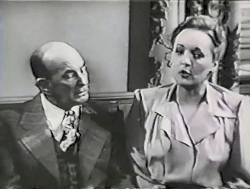
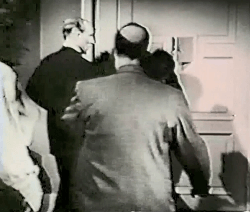
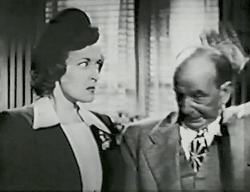
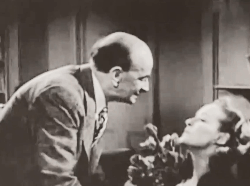




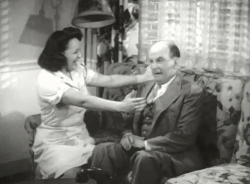

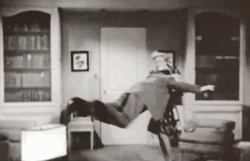
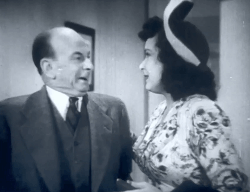

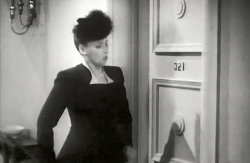

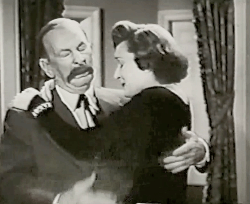


"Did you forget something, lady?" "No, I just discovered I'm on the wrong train. I should be going to Reno!"
-The conductor & Dorothy in Beware of Redheads (1945)
#dorothy granger#leon errol#man i cured 1941#gem jams 1943#girls! girls! girls! 1944#triple trouble 1944#he forgot to remember 1944#beware of redheads 1945#oh professor behave! 1946#twin husbands 1946#borrowed blonde 1947#wife tames wolf 1947#hired husband 1947#bet your life 1948#bachelor blues 1948#dad always pays 1949#oil's well that ends well 1949#texas tough guy 1950#one wild night 1951#lord epping returns 1951#leon and dorothy#rko short films#rko comedies
1 note
·
View note
Photo

Oklahoma! (1955)
Composer Richard Rodgers was in search of a new songwriting partner in the early 1940s. His previous partner, the lyricist Lorenz Hart, was devolving into an alcoholism that would soon claim his life. Wanting to transform Lynn Riggs’ rustic play Green Grow the Lilacs into a musical, Rodgers would find a new lyricist in Oscar Hammerstein II, who had not been involved in any Broadway successes for some time. Rodgers and Hammerstein’s 1943 adaptation of Rigg’s play was Oklahoma! and – despite widespread predictions that Broadway audiences would only flock to modern, urbane works – it became the longest-running Broadway musical for another dozen or so years. It began one of the most fruitful, important, and accomplished musical theater partnerships in the medium’s history.
Interest in a cinematic treatment from Hollywood’s major studios for the first Rodgers and Hammerstein musical came almost immediately after the initial reviews for Oklahoma!, but the rights went not to a movie studio, but a film equipment start-up known as the Magna Theatre Corporation. Magna’s owners intended Oklahoma! as a test for the Todd-AO widescreen process (a rival to Cinerama), but more on that and the film’s unique distribution history – which involves RKO and 20th Century Fox – later. Most importantly, the lack of studio executives to appease meant that Rodgers and Hammerstein could have full control over the film’s structure and musical/narrative changes for this adaptation. Directed by Fred Zinnemann (1952’s High Noon, 1953’s From Here to Eternity) – an unorthodox choice, given his expertise for morally complex dramas and no musical experience – 1955’s Oklahoma! is a harbinger for the Rodgers and Hammerstein musical films to come, and an inextricable part of the duo’s legacy.
Somewhere in the Oklahoman countryside, amid corn as high as an elephant’s eye, is the clean-cut cowboy Curly McLain (Gordon MacRae). Curly is en route to the farmstead of his crush, Laurey Williams (Shirley Jones in her cinematic debut), and Laurey’s aunt, Aunt Eller (Charlotte Greenwood). There, Curly invites Laurey to the box social scheduled for later that evening. Annoyed that it took him this long to ask her out, Laurey decides instead to go the box social with the Williams’ antisocial and intimidating farmhand, Jud Fry (Rod Steiger). Elsewhere at the train station, another cowboy, Will Parker (Gene Nelson) might be singing about how much he was entranced by Kansas City, but he is searching for his sweetheart, Ado Annie (Gloria Grahame) – herself entranced by traveling salesman Ali Hakim (Eddie Albert in brownface).
No members of the original Broadway cast reprised their roles for this film, which also stars Barbara Lawrence and character actors James Whitmore, Jay C. Flippen, and Roy Barcroft.
As Curly, MacRae is like a Broadway stage version of the characters Gene Autry or Roy Rogers might have played in another decade. MacRae, who started his career as a Broadway and radio singer, had just run down the end of his contract with Warner Bros. (signed in 1947) when he appeared in Oklahoma!. At Warners, he starred in a number of musicals including Look for the Silver Lining (1949) and opposite Doris Day in On Moonlight Bay (1951), but he had only starred in a film adaptation of stage musical once before. MacRae, despite a long hiatus from the Broadway stage, is a natural here: charming and exuding a natural chemistry with co-star Shirley Jones. This exterior, however, is not without malice – as seen in the scene where Curly tries to influence Jud to commit self-harm. Cut from the same baritone cloth like contemporary Howard Keel (Frank Butler in 1950’s Annie Get Your Gun, Adam Pontipee in 1954’s Seven Brides for Seven Brothers), MacRae never achieved the popularity that other stage-to-screen musical stars of the ‘30s and ‘40s did (and, of course, Julie Andrews much later on).
The film’s surprise package for audiences in 1955 was in Shirley Jones. Jones, rather than subjecting herself to a vetting process by a director, casting director, or studio executives, was hand-picked by Rodgers and Hammerstein. Stunned by her 1953 audition for the premiere of South Pacific but wanting more experience for the then-nineteen-year-old, the songwriting duo kept Jones in mind for future productions and signed her on a contract (Jones was the first and only singer to be contracted to Rodgers and Hammerstein). With a few years of Broadway productions under her belt, Jones still came to Oklahoma! lacking an understanding on how to tailor sharper emotions to a film camera. With Fred Zinnemann’s assistance, she navigates Laurey’s light romantic comedy scenes and tumultuous friendship (if one can call it that) with Jud maturely – one could scarcely believe this is her cinematic debut. For Laurey, she accentuates the character’s naïveté, especially in respect to how she acts around men and romantic idealizations, without feeling grating or overacting (a common problem when approaching characters without much life experience) the part. Jones’ excellence in Oklahoma! would land her the lead in Carousel (1956), with other Hollywood hits in Elmer Gantry (1960) and The Music Man (1962) to follow.
As their artistic collaboration progressed, Rodgers and Hammerstein did not shy away from asking heavier questions in their musicals. Their first two projects, Oklahoma! and the musical film State Fair (1945) are relatively airy, flighty compared to their successors – the darkness of morality in Carousel, the racist beliefs of the lead character in South Pacific. Foreshadowing that later drama in successive musicals is the misanthropic (not just misogynistic) character of Jud Fry. Played by Rod Steiger, Jud is a villain without any redeeming qualities in the original musical. Steiger’s Jud remains a reprehensible character, but Steiger – as have most other actors who have played Jud in on stage in the decades since – positions Jud as more of a loner whose social ineptitude results in an unchecked covetousness over Laurey. To some reading that last sentence, that distinction between portrayals of Jud may not make any meaningful difference in one’s negative opinions about the character and his actions. Yet, Steiger’s portrayal of Jud – as sloppy, maladjusted, knowing little else about life other than farm work – is nevertheless a refinement on the character Rodgers and Hammerstein originally did not give much thought to.
Zinnemann’s dramatic tendencies needed moderation, as they sometimes threated to overshadow the musical features. Although, to Zinnemann’s credit, as a dramatist first, he imbues Oklahoma! with a dramatic fervor that came to define all Rodgers and Hammerstein musical film versions after it – something that one never received from the somewhat assembly line-like musical from Metro-Goldwyn-Mayer (MGM) and Fox. Oklahoma! was Zinnemann’s first widescreen film, as well as the first time he shot in color. The emotional intensity of his earlier movies would be antithetical to the sweeping rural cinematography that he and cinematographer Robert Surtees (1959’s Ben-Hur, 1971’s The Last Picture Show) and Floyd Crosby (1931’s Tabu: A Story of the South Seas, 1960’s House of Usher) needed to capture. Zinnemann, Surtees, and Crosby offer sumptuous images of the Arizona countryside (Oklahoma’s oil wells proved too plentiful and distracting for the production) and the inviting blue sky that overhangs the cornfields sweeping across the land. With widescreen cameras rather new around 1955, the cameras wisely stay further back in interior scenes (shot at MGM’s studios in Culver City, California) with numerous people, directing our gaze centrally with brilliant blocking from the actors. The staging nevertheless feels like a stagebound musical during some interior scenes, like a lower-budget MGM musical with a trivial plot.
The widescreen cinematography, of course, was purposefully a showcase – see the shots of Gene Nelson spinning his rope directly towards the camera in “Kansas City” and the shot of an overly-excited auctioneer hammering their gavel and having the gavel nearly break the camera in another. Magna Theatre Corporation intended Oklahoma! to be a demonstration of their new Todd-AO 70mm process, in hopes of competing against Cinerama (which used three synchronized projectors at once on a curved screen). Because some theaters could not support the widescreen prints, two different versions of Oklahoma! exist: one in Todd-AO and another in CinemaScope (the latter a 20th Century Fox invention). This review is based on the Todd-AO print – which I recommend over the CinemaScope print – that currently is streaming on Disney+. Another note about the Todd-AO print: the first two films shot on Todd-AO 70mm – Oklahoma! and Around the World in Eighty Days (1956) – were shot in 30 frames per second (FPS) rather than the standard twenty-four. Thus, the Todd-AO print will appear slightly smoother in motion than most all other films, including modern ones.
Why 30 FPS for film screenings in 1955? Higher frames per second result in less noticeable light flickering and more dynamic colors (these effects for movies shot at higher FPS rates only apply to films shot on film stock, not digital). However, film projectors with a Todd-AO print would run hotter, requiring simultaneous cooling of the film while it ran through the projector. All subsequent films shot on Todd-AO reverted to the standard twenty-four frames per second.
youtube
Diehard musical fans often consider Fred Zinnemann’s Oklahoma! the most faithful – narratively, musically – of all the Rodgers and Hammerstein film adaptations. Deleted from Oklahoma! are two songs: Ali Hakim’s chauvinistic “It’s a Scandal, It’s a Outrage! [sic]” and Jud’s brooding “Lonely Room”. The former has among the least musical interest in the entire musical, but “Lonely Room” might have been a helpful source of characterization of Steiger’s Jud (the limited vocal range required for the song would suit Steiger). Otherwise, some of Rodgers and Hammerstein’s most iconic songs are present, starting with “Oh, What a Beautiful Mornin’”. Sung solo by MacRae on horseback (as opposed to being sung completely offstage in the original stage version), it serves the same purpose as the title song from The Sound of Music (1965) does. It establishes Curly’s character (mostly), and establishing the vast environs where the film takes place. The atmospheric opening shot of the camera moving through the corn and opening up into a grassy landscape might seem corny inane, but what a visual message it sends for one of the early widescreen American movies. Curly’s solo leads into “The Surrey with the Fringe on Top”, as he attempts to woo Laurey into accompanying him to the box social. A brief visual aside to allow viewers who do not know what a surrey looks like is a touch that a stage musical cannot provide, but this song – along with my choice of the best song in the musical, “People Will Say We’re in Love” (which gives MacRae and Jones a lovely duet with the production’s most romantic melodies) – exemplifies the rapport between MacRae and Jones and their two characters.
There remains charm aplenty across the musical score. Gene Nelson’s rendition of “Kansas City” is by no means essential to the plot of Oklahoma!, but it is a diverting number with some fancy footwork by not only Nelson (essentially the film’s comic relief and using a perfect, non-jarring voice for such a role), but Charlotte Greenwood and the scene’s extras as well. And then, arriving late, there is also the lively title song, delivered by MacRae with a similar energy as he employs for “Oh, What a Beautiful Mornin’”. “Oklahoma” became the official state song for Oklahoma in 1953, replacing a lesser-known song, “Oklahoma – A Toast”. Credit must also go to the extras and chorus for spearheading the song for its second half, as well as Robert Russell Bennett for his gorgeous (and definitive) vocal arrangement.
As its theatrical release drew near, details of the distribution of Oklahoma! would depend on which print a theater received. If a movie theater screened the Todd-AO 70mm print, Magna handled the distribution; if they showed the anamorphic CinemaScope 35mm print, the responsibility fell to RKO. RKO – the studio that gave audiences King Kong (1933), Citizen Kane (1942), and distributed all Disney movies until Rob Roy: The Highland Rogue (1954) – had fallen into turmoil by the mid-1950s and, by decade’s end, would be the first of the Big Five Hollywood studios to cease operations. The studio’s tyrannical owner, the eccentric Howard Hughes, disemboweled the studio from the inside out, and is a story for another day. Due to Hughes’ mismanagement, RKO withdrew from distribution and, in their place, came 20th Century Fox. Todd-AO and Fox shared theatrical and home media rights until Fox’s purchase by Disney in 2019; Todd-AO and Disney retain the split-ownership arrangement over Oklahoma!.
Though Oklahoma! is not usually part of most cinephiles’ and musical nerds’ pantheons of great Hollywood musicals, its contributions to the subsequent Rodgers and Hammerstein film adaptations are unmistakable. The duo’s closeness to numerous parts of the film’s production, the stunning widescreen cinematography, and the casting of actors with proven musical ability are hallmarks to be replicated, even in lesser adaptation such as South Pacific (1958) and Flower Drum Song (1961). For Rodgers and Hammerstein, they were so pleased from working with Fox that they continued to provide the rights to their musicals for all of their works’ adaptations with the exception of Flower Drum Song (which went to Universal). Like their work on Broadway, their best music and best movie adaptations of their musicals was yet to arrive. Oklahoma! marks a solid, healthy start to that run of adaptations, a hallmark of mid-century American moviemaking.
My rating: 7.5/10
^ Based on my personal imdb rating. My interpretation of that ratings system can be found in the “Ratings system” page on my blog (as of July 1, 2020, tumblr is not permitting certain posts with links to appear on tag pages, so I cannot provide the URL).
For more of my reviews tagged “My Movie Odyssey”, check out the tag of the same name on my blog.
#Oklahoma!#Rodgers and Hammerstein#Fred Zinnemann#Gordon MacRae#Shirley Jones#Gene Nelson#Gloria Grahame#Charlotte Greenwood#Rod Steiger#James Whitmore#Richard Rodgers#Eddie Albert#Oscar Hammerstein II#Robert Surtees#Floyd Crosby#My Movie Odyssey
10 notes
·
View notes
Text
TOO MANY HUSBANDS
April 21, 1947

The Gulf Screen Guild Theater present Wesley Ruggles’ Too Many Husbands, which was a 1940 Columbia Pictures release.
Produced and Directed by: Bill Lawrence
Music by: Wibur Hatch
Synopsis ~ Vicky Lowndes (Lucille Ball) loses her first husband, Bill Cardew (Bob Hope), in a boating accident in which he is presumed drowned. The lonely widow is comforted by Bill's best friend and publishing business partner Henry Lowndes (Frank Sinatra). Six months later, she marries him. Six months after that, Bill shows up, after having been stranded on a uninhabited island and then rescued. Vicky has a tough choice to make.

The Screen Guild Theater (aka The Screen Guild Players), was one of the most popular drama anthology series during the Golden Age of Radio. At this point it is being sponsored by Gulf Oil. From its first broadcast in 1939, up to its farewell in 1952, it showcased radio adaptations of popular Hollywood films. Many Hollywood names became part of the show, including Bette Davis, Bing Crosby, Clark Gable, Judy Garland, Frank Sinatra, and many more. The actors’ fees were all donated to the Motion Picture Relief Fund, an organization that provides aid to retired actors. Screen Guild Theater was heard on different radio networks, beginning with CBS from 1939 to 1948, NBC from 1948 to 1950, ABC from 1950 to 1951, and back to CBS until its last episode on June 29, 1952. Throughout its run, a total of 527 episodes were produced.
The radio show brought movies to radio for thirty minutes each Monday evening on CBS. The show aired for 242 programs beginning with “Yankee Doodle Dandy” starring James Cagney and ending with “My Reputation.” In between were all time classics such as “Casablanca” with Humphrey Bogart and Ingrid Bergman, “Sergeant York” with Gary Cooper and “Holiday Inn” with Bing Crosby, Fred Astaire, and Dinah Shore.
The Screen Guild Players previously broadcast an adaptation of “Too Many Husbands” on March 8, 1942 starring Hedy Lamar, Bob Hope, and Bing Crosby. On September 4, 1944 yet another version was aired by the Players, starring Donna Reed, Frank Sinatra, and Bill Goodwin.

Too Many Husbands (1940) was produced and directed by Wesley Ruggles, with a screenplay by Claude Binyon. The film stars Jean Arthur, Fred MacMurray and Melvyn Douglas, and is based on the 1919 play Home and Beauty by W. Somerset Maugham, which was retitled Too Many Husbands when it came to New York. The story is a variation on the 1864 poem Enoch Arden by Alfred, Lord Tennyson. In the UK, the film was released as My Two Husbands. The film was nominated for an Oscar for Sound Recording. Too Many Husbands was remade as a musical, Three for the Show (1955), with Jack Lemmon and Betty Grable.
Two of the film’s background players, Bert Stevens and James Conaty, were later seen in as extras on “I Love Lucy.” Sam McDaniel (brother of Oscar-winner Hattie McDaniel of Gone With the Wind), plays a porter, just as he will do on “I Love Lucy,” becoming the first black actor to have lines on the series. Star Fred MacMurray will appear with Lucille Ball in “Lucy Hunts Uranium” in 1958.
RADIO CAST

Lucille Ball (Vickie) plays the role originated in the film by Jean Arthur. In April 1947, Ball was awaiting the release of two films: Lured and Her Husband’s Affairs.
Bob Hope (Bill) plays the role originated in the film by Fred MacMurray. Hope had just released the film My Favorite Brunette. Hope and Ball would do four films together, staring in 1949 with Sorrowful Jones.
Frank Sinatra (Henry) plays the role originated in the film by Melvyn Douglas. Sinatra had just released the film It Happened in Brooklyn on April 7, 1947. Primarily a singer, this is the only time he acts opposite Lucille Ball.
Truman Bradley (Announcer) was selected by Henry Ford to be the announcer for the “Ford Sunday Evening Hour”. With his distinctive, authoritative voice, he soon became a radio actor as well as a narrator in numerous movies. Bradley was the radio announcer for shows by Red Skelton, Burns and Allen, and Frank Sinatra.
Peter, the Butler is played by an uncredited performer.
‘TOO MANY’ TRIVIA!

The title is easily confused with the title of Lucille Ball’s radio series “My Favorite Husband,” and her films Too Many Girls, and Her Husband’s Affairs.

Lucille Ball also appeared with Screen Guild Players in “Tight Shoes” (April 12, 1942), “Nothing But the Truth” (May 3, 1943), and “A Night To Remember” (May 1, 1944).

From late 1942 to July 1947 Lady Esther Cosmetics sponsored the show which had been previously sponsored by Gulf Oil. It was first known as the “Lady Esther Presents the Screen Guild Players” and then became "The Lady Esther Screen Guild Theater.”

As is his penchant, Hope ad libs during the script. While hugging Vickie upon his return from the ‘dead’, he says “Let’s just stay like this till ‘Take it or Leave It’ comes on the air!” “Take It or Leave It” was a radio quiz show, which ran from April 1940 to July 1947 on CBS. It switched to NBC in 1947, and in September 1950, the name of the program was changed to “The $64 Question.” Hope often flubs his dialogue, but covers with comedy.

Bill (or maybe it is Bob ad libbing) mentions Dorothy Dix. Author Elizabeth Meriwether Gilmer (1861-1951) was widely known by the pen name Dorothy Dix. As the forerunner of today’s popular advice columnists, Dix was America’s highest paid and most widely read female journalist at the time of her death. Her advice on marriage was syndicated in newspapers around the world with an estimated audience of 60 million readers.
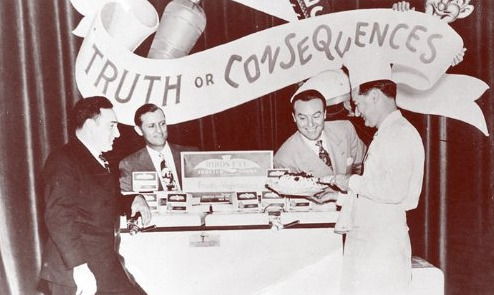
Bill (or maybe it is Bob ad libbing) wonders why Vickie married Henry: “Did you lose a question on “Truth or Consequences?” “Truth or Consequences” was a game show originally hosted on NBC radio by Ralph Edwards (1940–1957), although it also was later seen on television.

Bill (or maybe it is Bob ad libbing) says that the mattress on the bed that he and Henry have to share feels like it has been stuffed with Grape-Nuts. Grape-Nuts is a breakfast cereal developed in 1897 by C. W. Post. Post originally developed the product as a batter that came from the oven as a rigid sheet, which was then broken into pieces and run through a coffee grinder to produce the "nut"-sized kernels.

The first commercial break advertises Lady Esther’s four-purpose face cream. In these live commercials, the spokeswoman in known as Lady Esther, although she was not the actual Esther Cohen that the cosmetics line was named for.
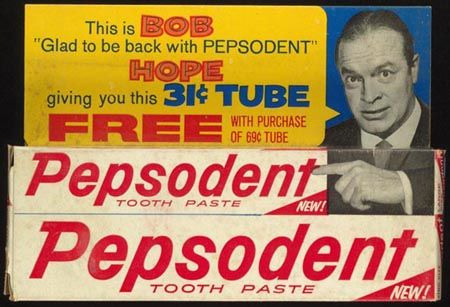
Bob Hope ad-libs about his “Pepsodent contract”. Hope hosted “The Pepsodent Show” from September 1938 to June 1948. The program also featured Jerry Colonna along with Blanche Stewart and Elvia Allman as well as a continuously rotating supporting cast and musicians which included Desi Arnaz and his orchestra.
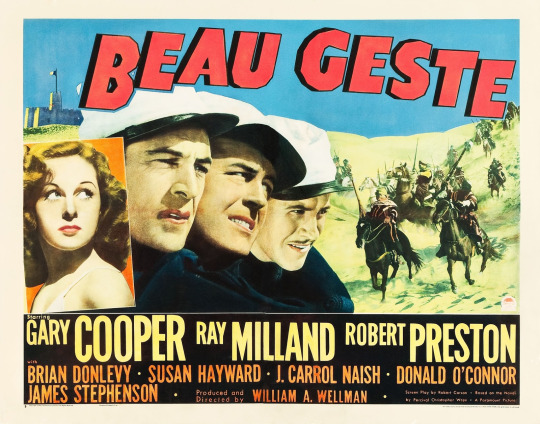
Henry tells Bill he should leave and join the Foreign Legion. Bill replies that he’ll meet him halfway by going to the library and reading Beau Geste. Beau Geste is an adventure novel by P. C. Wren, which details the adventures of three English brothers who enlist separately in the French Foreign Legion following the theft of a valuable jewel from the country house of a relative. Published in 1924, the novel has been adapted for the screen several times: 1926, 1939, and 1966.
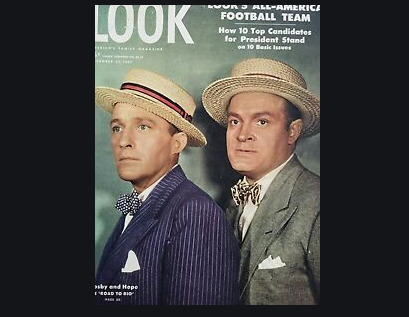
Henry asks Bill (Bob) if he can spell “pithecanthropus" and defines it a the missing link between man and ape. Bob (Bill) replies “C.R.O.S.B.Y”! Bing Crosby was a singer that partnered with Hope on dozens of films, particularly their “road” films. In April 1947, Crosby had just appeared in a cameo role in Hope’s newest film, My Favorite Brunette. By the end of 1947, The Road to Rio will be released. Coincidentally, in the 1942 Screen Guild production, Crosby played Henry, the role taken here by Sinatra.

Just before Vickie breaks it to Henry that she’d rather be married to Bill, Henry (or maybe it is Crosby) sings “Time After Time” (1946), a romantic ballad by Sammy Cahn and Jule Styne, written for Sinatra to introduce in the 1947 film It Happened in Brooklyn, which had premiered two weeks earlier. In return, in the very next scene, Bob Hope warbles a few notes of “Thanks for the Memory”, his signature song.

At the end, Lucille Ball thanks the Motion Picture Relief Fund and it’s country house. In 1940, Jean Hersholt, then-president of the Motion Picture Relief Fund, found 48 acres of walnut and orange groves in the southwest end of the San Fernando Valley to build the Motion Picture Country House. The dedication was on September 27, 1942. The Motion Picture Hospital was dedicated on the grounds of the Country House in 1948.
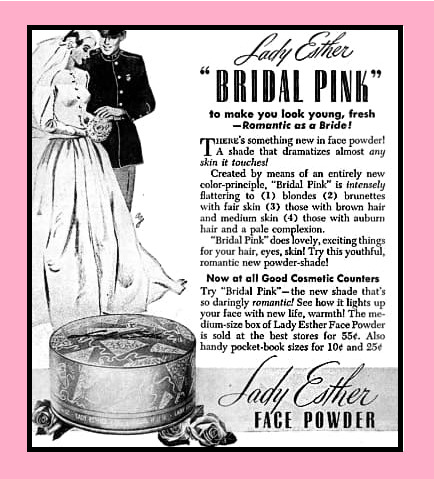
The final commercial, once again delivered by ‘Lady Esther’ is for Lady Esther Bridal Pink Face Powder.
‘TOO MANY’ CLOSING CREDITS

The announcer (Truman Bradley) promotes next week’s program, Stork Bites Man, starring Jackie Cooper, Anita Louise, and Gus Schilling.
Stork Bites Man was a United Artists film that would not be released until June 1947. It also starred Cooper and Schilling.

Columbia Pictures is credited as the producer of The Guilt of Janet Ames, starring Rosalind Russell and Melvyn Douglas. Coincidentally, Douglas starred in the film version of Too Many Husbands.

The music was arranged and conducted by Wilbur Hatch, who also did the same for “My Favorite Husband” and “I Love Lucy.”

Lucille Ball appeared courtesy of Metro Goldwyn Mayer, producers of The Sea of Grass starring Spencer Tracy, Katharine Hepburn, and Robert Walker.

Bob Hope appears through the courtesy of Pepsodent, and can currently be seen in the Paramount picture, My Favorite Brunette.
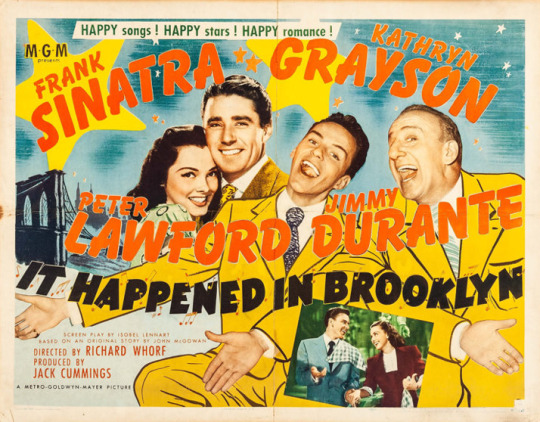
Frank Sinatra appears through the courtesy of Old Gold cigarettes, and can currently be seen in the MGM musical It Happened in Brooklyn, also starring Katharyn Grayson, Peter Walker, and Jimmy Durante.
The announcer reminds listeners that part of the country goes on Daylight Saving Time, and that the show will be heard one hour earlier.
#Too Many Husbands#Lucille Ball#Bob Hope#Frank Sinatra#Radio#Screen Guild Players#1947#Lady Esther#Wilbur Hatch#Dorothy Dix#Truth or Consequences#Pepsodent#Time After Time#Bing Crosby#Beau Geste#Grape-Nuts#Take It Or Leave It
9 notes
·
View notes
Text
Events 1.29 (after 1960)
1973 – EgyptAir Flight 741 crashes into the Kyrenia Mountains in Cyprus, killing 37 people. 1983 – Singapore cable car crash: Panamanian-registered oil rig, Eniwetok, strikes the cables of the Singapore Cable Car system linking the mainland and Sentosa Island, causing two cabins to fall into the water and killing seven people and leaving thirteen others trapped for hours. 1989 – Cold War: Hungary establishes diplomatic relations with South Korea, making it the first Eastern Bloc nation to do so. 1991 – Gulf War: The Battle of Khafji, the first major ground engagement of the war, as well as its deadliest, begins between Iraq and Saudi Arabia. 1996 – President Jacques Chirac announces a "definitive end" to French nuclear weapons testing. 2001 – Thousands of student protesters in Indonesia storm parliament and demand that President Abdurrahman Wahid resign due to alleged involvement in corruption scandals. 2002 – In his State of the Union address, President George W. Bush describes "regimes that sponsor terror" as an Axis of evil, in which he includes Iraq, Iran and North Korea. 2005 – The first direct commercial flights from mainland China (from Guangzhou) to Taiwan since 1949 arrived in Taipei. Shortly afterwards, a China Airlines flight lands in Beijing. 2008 – An Egyptian court rules that people who do not adhere to one of the three government-recognised religions, while not allowed to list any belief outside of those three, are still eligible to receive government identity documents. 2009 – Governor of Illinois Rod Blagojevich is removed from office following his conviction of several corruption charges, including solicitation of personal benefit in exchange for an appointment to the United States Senate as a replacement for then-U.S. president-elect Barack Obama. 2013 – SCAT Airlines Flight 760 crashes near the Kazakh city of Almaty, killing 21 people. 2014 – Rojava conflict: The Afrin Canton declares its autonomy from the Syrian Arab Republic. 2017 – A gunman opens fire at the Islamic Cultural Centre of Quebec City, killing six and wounding 19 others in a spree shooting. 2020 – COVID-19 pandemic: The Trump administration establishes the White House Coronavirus Task Force under Secretary of Health and Human Services Alex Azar.
0 notes
Text
Francis Bacon

https://www.artsy.net/article/artsy-editorial-francis-bacon
https://www.francis-bacon.com/artFrom a small London studio littered ankle-deep with source material, bottles of fine champagne, and a cacophony of paint splatters, Francis Bacon conjured some of the most innovative and, as art critic Robert Melville once put it, “satanically influential” paintings of the 20th century. His canvases writhe with fleshy, screaming, contorted figures, from popes and famed art-historical subjects to friends and ill-fated lovers. His searing work embodies a host of post-war cultural anxieties, as well as Bacon’s personal demons and obsessions.
But what was this mighty, enigmatic painter’s secret to creating such spellbinding imagery—and, all the while, upholding his status as king of the bon vivants? Below, we pull back the curtain on who Bacon was, what motivated his deeply affecting paintings, and why their sulfurous power won’t be fading anytime soon.
Who Was Francis Bacon?
Bacon was a complex man whose work was informed by a tangled web of intense relationships, art-historical fixations, and a fair number of vices. Born in Dublin in 1909 to a domineering father, Capt. Anthony Edward Mortimer, and his much younger wife, Christina Winifred Firth, Bacon was derided as a “weakling” and, as legend has it, horse-whipped by his father during his youth due to issues with chronic asthma. At 17, he was kicked out of the family home for good when he was discovered trying on his mother’s underwear.

Francis Bacon Three Studies for Self-Portrait, 1976 Richard Gray Gallery
But despite (or perhaps because of) his asthmatic bouts and the abuse he endured, Bacon was strong-willed and resilient, with the constitution of a bull. He drank, ate, gambled, loved, and painted with such voraciousness that he rarely had time for sleep; two to three hours a night was typical. Through this haze of debauchery and hard living, and bolstered by deep friendships and aesthetic obsessions, Bacon produced a cascade of paintings that were not only disturbingly beautiful, but also boldly original. His shocking work galvanized the group of painters surrounding him in mid-century London (the “School of London”) and eventually influenced several generations of artists to come, includingDamien Hirst, Jenny Saville, and Jake and Dinos Chapman, to name just a few. What Inspired Him? After Bacon was jettisoned from his family home, he embarked on a series of European escapades that opened his eyes to art and design, not to mention other earthly pleasures, like sex and wine. Several works he encountered during his travels made a lasting impact on his work and wouldn’t leave his mind until his death in 1992. While studying French near Chantilly in 1927, he happened upon Poussin ’sgreat Massacre of the Innocents (1628–29) and was struck by the emotional agony of the scene, embodied forcefully in the screaming maw of a mother whose child is about to be killed. Later that year, he picked up a book detailing diseases of the mouth, and not long after that, he watched Sergei Eisenstein’s 1925 film Battleship Potemkin, which features a scene of a howling, bloodied nurse—an image permanently tattooed on his mind. Around that time, on a trip to Paris, he was also introduced to Picasso ’searly figurative drawings. All these run-ins provided Bacon with his initial art education (he was never formally trained) and went on to influence his unique approach to rendering the human body as a malleable—and, at times, grotesque—vessel of raw human feeling.
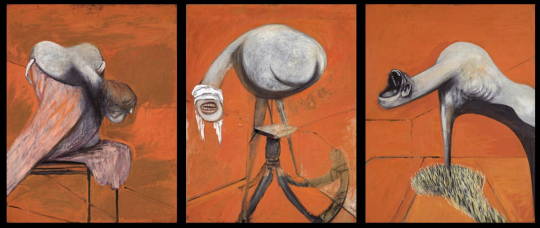
THREE STUDIES FOR FIGURES AT THE BASE OF A CRUCIFIXION 1944 Oil and pastel on fibreboard approx. Triptych: Each panel: 37 x 29 in. (94 x 74 cm) irregular
The wide-open mouth would later materialize in some of the painter’s greatest canvases: his series of wailing popes, which he toiled over from 1949 until 1971. They show blurred, bethroned men caught in the act of an intense and seemingly eternal scream that, as Bacon biographer Michael Peppiatt has said, might have referred simultaneously to the militaristic orders of Bacon’s father, the raging rows between Bacon and his tortured lover Peter Lacy, or more simply, to a cry of fear or the climax of a body-quaking orgasm. This was the rare power of Bacon’s work: fusing a range of references into a Frankenstein’s monster of a whole, a beast shuddering with frustration, tension, and countless other, subtler emotions.
Bacon’s “Popes” also reveal another influence: Velázquez ’s Portrait of Pope Innocent X (1650), a painting Bacon became so infatuated with that he admitted to having a “crush” on it. Time and time again, Bacon would rework his own version of the masterpiece, although, interestingly, he refused to see the painting in person when he finally made a trip to Rome. He was embarrassed, he told Peppiatt, of his many “stupid” manipulations of the piece.
Alongside the many other great artists (Giacometti, Van Gogh, and Matisse among them) who influenced Bacon, the painter also looked for creative guidance in the work of writers and poets—namely Racine, Baudelaire, and Proust. He was attracted to their ability to pare down the complexities of human existence into succinct lines and phrases; he sought to do the same with the arresting figures rooted at the core of his canvases.

THREE STUDIES FOR A CRUCIFIXION 1962 Oil on canvas Triptych: Each panel: 78 x 57 in. (198.1 x 144.8 cm)
How Did He Work?
Reproductions of Bacon’s inspirations—like the Massacre of the Innocents, along with tattered photos of wild animals, Egyptian talismans, and more—ended up in a soupy jumble on the floors of the many studios he occupied over the course of his career. The exuberant mess was accented with paint and the occasional vestiges of parties he hosted after a long night of carousing through London’s drinking clubs and gambling houses. One of Bacon’s friends, the painter Graham Sutherland , once described Bacon’s early Cromwell Place studio as “a large chaotic place, where the salad bowl was likely to have paint on it and the painting to have salad dressing on it.” But for all his decadence, Bacon was also extremely dedicated, with his own brand of regimentation. “You have to be disciplined in everything, even in frivolity,” he was known to have said. “Above all in frivolity.” Indeed, his passion for enthusiastic and prolonged socialization seemed to fuel his work. Without fail, after a late night of partying, he would wake up at 6 a.m. to paint for several hours in the morning light. Then he’d begin dining and boozing about town, liaising with his many friends and acquaintances, from fellow painters Lucian Freud and Frank Auerbach to renowned London collectors, such as the Sainsbury’s, to one of his many lovers, like Lacy or Eric Hall. He even went so far as to say that he worked better after a night of drinking: “My mind simply crackles with electricity after one of those evenings,” he once boasted to his friends. “I think the drink actually makes me freer.”

THREE FIGURES AND PORTRAIT 1975 Oil, pastel, alkyd paint and sand on canvas 78 x 58 in. (198.1 x 147.3 cm)
There were some risks to this routine, however. On several occasions, he’d come home late at night, wildly drunk, and decide to “perfect” a painting he’d finished the day before, only to wake up the next morning and discover that he’d ruined it. After one of these episodes, his gallery began collecting his paintings from his studio the moment he finished them.
Bacon’s childhood nanny, Jessie Lightfoot, who lived with the painter until her death in 1951, and his two primary dealers—first Erica Brausen at Hanover Gallery, then Valerie Beston at Marlborough Gallery—also played major roles in helping organize his life and career. When Bacon was struggling financially during his youth, Lightfoot helped him find lovers who would also provide financial support. Brausen became a close friend and confidante; they bonded over their shared homosexuality and appetites for risk-taking (Bacon’s on the canvas; Brausen’s on the walls of her gallery). And starting in 1958, Miss Beston, as she was affectionately called, arranged almost all of Bacon’s day-to-day logistics during his most successful years. She paid his bills, arranged his calendar, made sure his apartment stayed clean, and kept him to his painting schedule. She also kept his canvases out of the trash bin, as he was known to destroy them.
Why Does His Work Matter?
Bacon brought new emotional intensity to the painted figure by representing his subjects—be they friends or mythological figures—as contorted, fleshy, emotionally open masses. He sought to reveal, in all its complexity, what was behind the human facade. “I would like my pictures to look as if a human being had passed between them, like a snail leaving its trail of the human presence…as a snail leaves its slime,” he once said. Indeed, Bacon’s paintings pulsate with the dual energy of human suffering and ecstasy. They seem to unearth, in their blurred limbs and wide-open mouths, our most primal urges. (Scholars have noted that in his canvases from the 1950s, monkeys and men often closely resemble one another.)
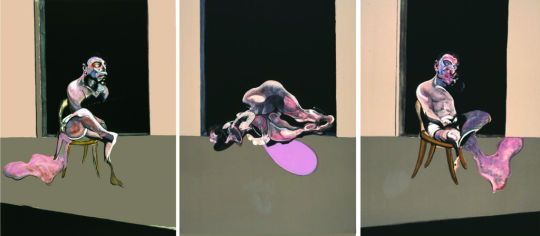
Francis Bacon
Triptych – August 1972, 1989 Marlborough Gallery
2 notes
·
View notes